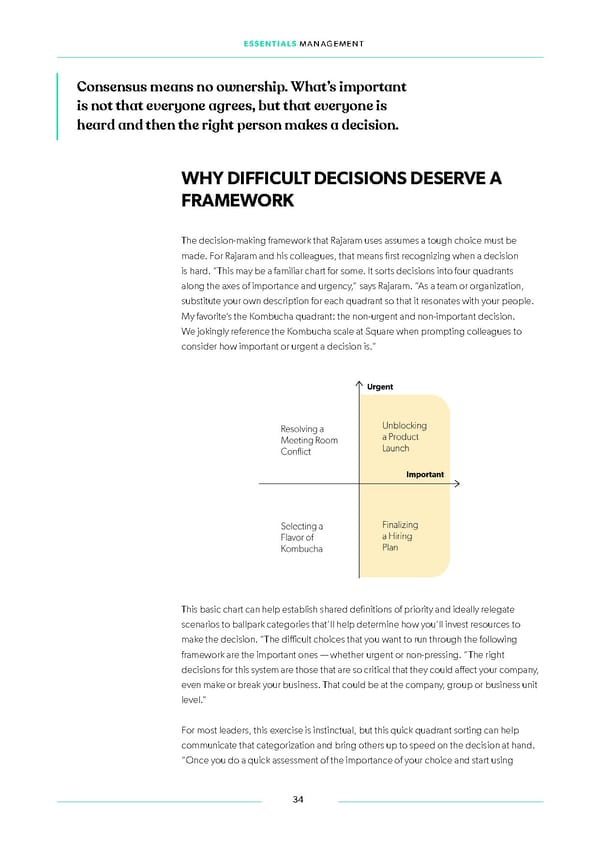ESSENTIALS MANAGEMENT Consensus means no ownership. What’s important is not that everyone agrees, but that everyone is heard and then the right person makes a decision. WHY DIFFICULT DECISIONS DESERVE A FRAMEWORK The decision-making framework that Rajaram uses assumes a tough choice must be made. For Rajaram and his colleagues, that means ifrst recognizing when a decision is hard. “This may be a familiar chart for some. It sorts decisions into four quadrants along the axes of importance and urgency,” says Rajaram. “As a team or organization, substitute your own description for each quadrant so that it resonates with your people. My favorite’s the Kombucha quadrant: the non-urgent and non-important decision. We jokingly reference the Kombucha scale at Square when prompting colleagues to consider how important or urgent a decision is.” This basic chart can help establish shared deifnitions of priority and ideally relegate scenarios to ballpark categories that’ll help determine how you’ll invest resources to make the decision. “The diiffcult choices that you want to run through the following framework are the important ones — whether urgent or non-pressing. “The right decisions for this system are those that are so critical that they could affect your company, even make or break your business. That could be at the company, group or business unit level.” For most leaders, this exercise is instinctual, but this quick quadrant sorting can help communicate that categorization and bring others up to speed on the decision at hand. “Once you do a quick assessment of the importance of your choice and start using 34
 Essentials Management First Round Capital Page 33 Page 35
Essentials Management First Round Capital Page 33 Page 35